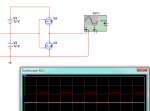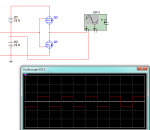- Joined
- Oct 26, 2007
- Messages
- 5,438
- Points
- 83
HAH!, my favorite part is when they have values for driving capacitive and inductive loads with DC. Good luck with that. :crackup:They have a fundamental misunderstanding of most of the AC load types, too.
Lamps aren't shorts. Go measure the resistance of a light bulb - it's not zero. Sure, the inrush current can be a few times steady-state, but it's for a measly few milliseconds.
Lamps act like shorts in the sense that they draw 20 or more times their normal operating current when first turned on. Yes, and those "measly few milliseconds" are quite relevant to the switch rating.
All DC loads are resistive. If you put an inductor on a DC source, either the source or the inductor blows up. If you put a capacitor on a DC source, either nothing happens, or the DC source blows from the inrush current if the cap is particularly large.
You're thinking in terms of steady-state DC circuits. You can definitely have inductive and capacitive loads in a DC circuit, and these are especially relevant when a switch is thrown, generating a step-function.
Remember that switch ratings are not concerned with the steady-state current, but with the "instantaneous" changes that occur during the transition from on to off or vice versa.









